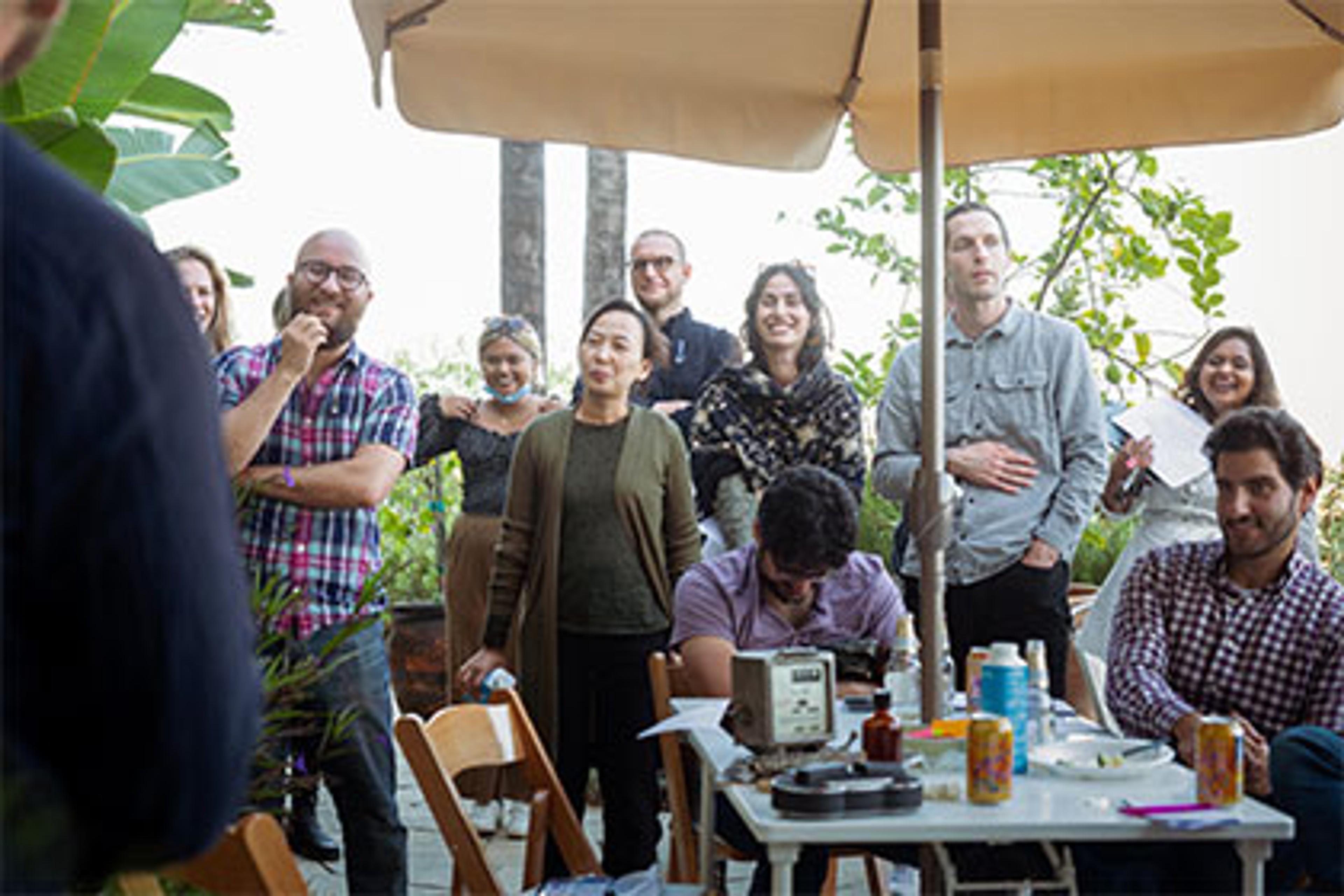In the Writers’ Room: Imagining a Planetary Future With Hollywood Flair

Imagining new ways to think about the future is a core component of the Berggruen Fellowship’s mission. As a part of their fall orientation, the new cohort of Berggruen Fellows participated in an evening of exercises with the National Academy of Sciences’ Science and Entertainment Exchange.
With the help of TV writers from the National Academy of Sciences’ Science Writers’ program, three groups of Fellows each developed a premise and pitch for a TV pilot, complete with a protagonist, antagonist, inciting incident, and season-ending twist. To spark the imagination, each group was given four or five real movie props rented from Universal Studios.
But with backgrounds as diverse as anthropology, urbanism, East African history, and the search for extraterrestrial intelligence, the Fellows’ imaginations needed little sparking. Noting that they “like shows where people are put in impossible situations,” a group led by writer Devon Quinn of Day Zero Productions that included Berggruen Institute Vice President of Programs Nils Gilman and Fellows Alden Young and Johanna Hoffman settled on a closeted gender non-binary protagonist in the 1950s. Named Jo, their Dodge sedan breaks down on the side of the road in the middle of nowhere, leaving them stranded. Hours later, another car finally appears to pick them up. But the driver is a member of a cult with terrifying ritual practices. All manner of personal torment and conflict ensue.

Illustrating a shared concern among Fellows about the fate of human life on Earth in a technologically-transformed future, the other two groups devised plots taking place in space, with characters contending with apocalypse back on Earth. A group led by writer Zach Calig of Netflix’s Narcos envisioned a National Treasure-like mystery unfolding on Mars. There, another gender non-binary person works with a genetically engineered sphinx to determine the cause of a centuries-old human extinction back on Earth, with only a fossil of an insect for a clue.
In a different variation, a group led by writer Raven Metzner featured characters stranded on a planetary space station struggling with the fallout from an unnamed global calamity. At the season’s close, a phone rings, revealing the survival of a small colony of other humans. This moment of hopeful joy flattens somewhat when these humans turn out to be a group of billionaires hiding out in a luxurious underground shelter.
After pitching their pilots to the whole cohort, the Fellows’ groups were given a new imaginative challenge: to develop a spinoff of another group’s show using its antagonist.
Much laughter followed, as the genetically engineered sphinx starts to suspect she’s living in a dream state or simulated reality; as the dead cats from the cult rise from the dead in a zombie thriller called Eight Lives; and as a multi-cam sitcom observes life inside the super-wealthy’s shelters on post-apocalyptic Earth, with pesky outsiders from the planetary space station ruining all the fun.
These shows might not appear on your favorite streaming service soon, but working with Los Angeles’ trademark creators is a reminder of the value of divergent thinking; the necessity of interdisciplinary dialogue; and the imagination required to create ideas that change the world.